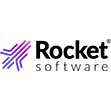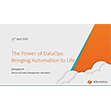
Agentic AI and the Scientific Data Revolution in Life Sciences

(McKinsey)
Life sciences run on data. Genomic sequences, trial results, patient charts, regulatory filings—it never ends. Each stage produces massive volumes, but much of it still sits in systems that don’t connect.
Scientists often spend long hours fixing files or reshaping spreadsheets instead of asking what the data is really saying. The tools they use work fine for collecting information, yet they rarely help when large datasets pile up or when real-time choices need to be made. That’s when the slowdown happens. Projects drag, insights are missed, and research that should move forward stays stuck.
This is the gap that agentic AI is beginning to close. A 2025 report from McKinsey and QuantumBlack describes these systems as collaborators, not just tools. They move through different platforms, understand the logic of tasks, and keep things moving without waiting for every command. They can flag odd patterns in trial data, pull key findings from the literature, or even draft regulatory submissions for a team to review.
The difference is in how they anticipate what comes next. Rather than pausing for direction, they keep the flow of work going. For life sciences organizations, that means tighter loops of feedback and fewer stalls. In practical terms, it means research groups and development teams can shift from simply handling information to actually accelerating discovery.
 McKinsey estimates that 75% to 85% of everyday workflows in life sciences could be handled more efficiently with AI agents. That could free up 25% to 40% of capacity in areas like drug discovery, trial planning, and compliance. And it isn’t only about getting time back.
McKinsey estimates that 75% to 85% of everyday workflows in life sciences could be handled more efficiently with AI agents. That could free up 25% to 40% of capacity in areas like drug discovery, trial planning, and compliance. And it isn’t only about getting time back.
The same report projects that agentic AI could lift revenue by 5% to 13% and increase EBITDA by 3.4 to 5.4 points in just a few years. Faster development, better trial execution, and sharper use of talent are what drive those numbers. The point is simple: this isn’t only about efficiency. It’s about creating real growth.
The story looks similar in medical technology. McKinsey found that 70% to 80% of medtech workflows could be improved with agents. Design, testing, documentation—much of it could be streamlined. Teams could reclaim 25% to 35% of their time, and the upside looks strong: 3% to 7% more revenue and an EBITDA boost of 2.2 to 4.7%. For device makers, the benefit isn’t just speed. It’s the chance to build safer products and bring them to patients faster.
Agents are also freeing up capacity in high-skill areas. Automating complex tasks like virtual prototyping could return 15% to 20% of R&D bandwidth. That space doesn’t go to waste. It gives scientists and engineers more room to test ideas, refine experiments, and push discovery forward instead of spinning in design loops.
McKinsey’s report spells out how this works day to day. In drug development, agents can process genomic data, generate early insights, and propose trial designs that would take weeks if handled manually. In clinical operations, they help clean and validate data, cutting trial preparation cycles that once stretched on for months. Regulatory teams also benefit. Draft submissions can be generated automatically, leaving specialists to focus on interpretation, analysis, and oversight.
The same logic applies in medtech. Agents help with prototyping, run design checks, and flag risks before a device reaches the lab. It’s not just about trimming steps. It’s about creating adaptive workflows that let scientific data move freely instead of piling up in silos. McKinsey frames it as a bigger transformation: raw information being turned into continuous progress.
There’s a workforce shift here too. McKinsey estimates that up to 95% of roles in life sciences will soon have an agent alongside them. The jobs themselves don’t disappear, but the balance of work changes. Agents take on the routine elements. Scientists and clinicians focus on context, problem-solving, and judgment.
New roles are already emerging. Agent orchestrators, who guide workflows. AI quality managers, who safeguard outcomes. These positions underline the fact that for many organizations, the hardest part won’t be technical—it’ll be cultural. Learning how to treat AI as a collaborator, not just a tool, takes time.
Life science operations are feeling the shift as well. In manufacturing, agents can read sensor data from bioreactors and adjust conditions on the fly, giving engineers finer control over yield and quality. In compliance, documentation agents tested in pilots have cut reporting cycles from weeks to hours, with productivity gains reaching 80%. That’s a huge leap, one that lets technical teams keep research and development on track rather than bogged down in paperwork.
Taken together, these examples suggest a near future where data is no longer a bottleneck in life sciences. Instead, it flows across teams, guided by agents that keep it usable and connected. Scientists, engineers, and clinicians spend their time on discovery and decision-making, while agents manage the rest. The result is a research environment that adapts in real time, moving treatments and devices from idea to reality faster than before.
Related Items
This Big Data Lesson Applies to AI
The AI Beatings Will Continue Until Data Improves
New Intelligent Data Kit Brings AI and No-Code to Algolia’s Data Play








































